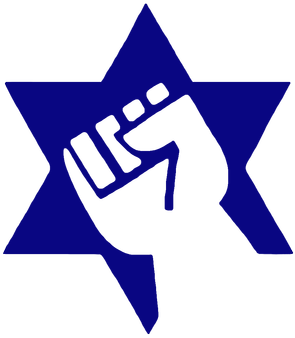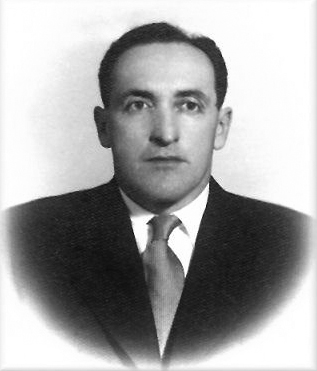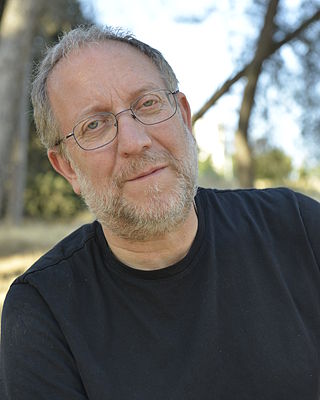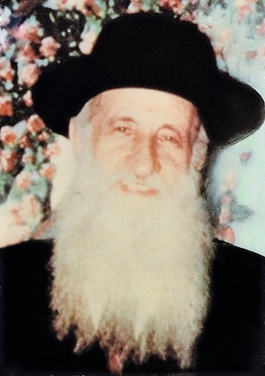
The Jewish Defense League (JDL) is a far-right religious and political organization in the United States and Canada. Its stated goal is to "protect Jews from antisemitism by whatever means necessary"; it has been classified as "right-wing terrorist group" by the Federal Bureau of Investigation (FBI) since 2001, and is also designated as hate group by the Southern Poverty Law Center. According to the FBI, the JDL has been involved in plotting and executing acts of terrorism within the United States. Most terrorist watch groups classify the group as inactive as of 2015.
This is a list of notable events in the development of Jewish history. All dates are given according to the Common Era, not the Hebrew calendar.

Shlomo Riskin is an Orthodox rabbi, and the founding rabbi of Lincoln Square Synagogue on the Upper West Side of New York City, which he led for 20 years; founding chief rabbi of the Israeli settlement of Efrat in the Israeli-occupied West Bank; former dean of Manhattan Day School in New York City; and founder and Chancellor of the Ohr Torah Stone Institutions, a network of high schools, colleges, and graduate Programs in the United States and Israel.

Avraham Haim Yosef (Avi) haCohen Weiss is an American Open Orthodox ordained rabbi, author, teacher, lecturer, and activist who led the Hebrew Institute of Riverdale in The Bronx, New York until 2015. He is the founder of Yeshivat Chovevei Torah for men and Yeshivat Maharat for women, rabbinical seminaries that are tied to Open Orthodoxy, a breakaway movement that Weiss originated, which is to the left of Modern Orthodox Judaism and to the right of Conservative Judaism. He is co-founder of the International Rabbinic Fellowship, a rabbinical association that is a liberal alternative to the Orthodox Rabbinical Council of America, and founder of the grassroots organization Coalition for Jewish Concerns – Amcha.

Nehemiah Levanon was an Israeli intelligence agent, diplomat, head of the aliyah program Nativ, and a founder of kibbutz Kfar Blum. Originally a native of Latvia, he immigrated to the Mandatory Palestine in 1938. After Israel's independence in 1948, Levanon served in a variety of roles to encourage the well-being and emigration of Soviet Jewry. Due to the covert nature of his work, Levanon's decades of service were largely unknown until after his retirement, during the last days of the Soviet Union.
Jacob (Yaakov) Birnbaum was the German-born founder of Student Struggle for Soviet Jewry (SSSJ) and other human rights organizations. Because the SSSJ, at the time of its founding, in 1964, was the first initiative to address the plight of Soviet Jewry, he is regarded as the father of the Movement to Free Soviet Jewry. His father was Solomon Birnbaum and grandfather Nathan Birnbaum.

Yossi Klein Halevi is an American-born Israeli author and journalist.
Irving M. Bunim was a businessman, philanthropist and a lay leader of Orthodox Jewry, in particular the Young Israel movement in the United States from the 1930s until his death in 1980. As an assistant to Aharon Kotler, he was involved in aspects of Torah dissemination, philanthropy and Holocaust rescue.
The Soviet Jewry movement was an international human rights campaign that advocated for the right of Jews in the Soviet Union to emigrate. The movement's participants were most active in the United States and in the Soviet Union. Those who were denied permission to emigrate were often referred to by the term Refusenik.
The National Coalition Supporting Eurasian Jewry (NCSEJ), formerly the National Council for Soviet Jewry (NCSJ), is an organization in the United States which advocates for the freedoms and rights of Jews in Russia, Ukraine, Belarus, the Baltic States, and Eurasia. Emerging from the American Jewish Conference on Soviet Jewry, now with a paid staff, it played an important role in the Soviet Jewry movement, including such landmark legislation as Jackson–Vanik amendment. Headquartered in Washington, D.C., it is now an umbrella organization of about 50 national organizations and 300+ local federations, community councils and committees.

Avraham Kalmanowitz was an Orthodox rabbi and rosh yeshiva (dean) of the Mir yeshiva in Brooklyn, New York from 1946 to 1964. Born in Russian empire, he served as rabbi of several Eastern European Jewish communities and escaped to the United States in 1940 following the German occupation of Poland. In the U.S. he was an activist for the rescue of the millions of Jews trapped in Nazi-ruled Europe and in the Soviet Union. He arranged the successful transfer of the entire Mir yeshiva from Lithuania to Shanghai, providing for its support for five years, and obtaining visas and travel fare to bring all 250 students and faculty to America after World War II. He established the U.S. branch of the Mir in 1946. In the 1950s he aided North African and Syrian Jewish youth suffering from persecution and pogroms, and successfully lobbied for the passage of a bill granting "endangered refugee status" to Jewish emigrants from Arab lands.
Freedom Sunday for Soviet Jews was the title of a national march and political rally that was held on December 6, 1987 in Washington, D.C. An estimated 200,000 participants gathered on the National Mall, calling for the General Secretary of the Communist Party of the Soviet Union, Mikhail Gorbachev, to extend his policy of Glasnost to Soviet Jews by putting an end to their forced assimilation and allowing their emigration from the Soviet Union. The rally was organized by a broad-based coalition of Jewish organizations. At the time, it was reported to be the "largest Jewish rally ever held in Washington."

Dov Schperling ; was a Zionist activist and leader who was amongst the first Jews to immigrate from the Soviet Union to Israel. He began his Zionist advocacy during the reign of the communists in the Soviet Union, when such activity was illegal, and as a consequence was imprisoned in a Russian gulag for two years. After his released, he emigrated to Israel, there he continued his struggle for the freedom of Soviet Jews. He was a member of the Herut right wing party and was a delegate of the Jewish Agency to Austria.

The Greater New York Conference on Soviet Jewry (GNYCSJ) was founded in 1971, as a non-governmental grassroots organization that worked to secure human rights for Jews in the Soviet Union. It served as an umbrella agency for a number of regional organizations of the Soviet Jewry movement. In the 1980 GNYCSJ was renamed Coalition for Soviet Jewry.
Louis Rosenblum was a pioneer in the movement for freedom of emigration for the Jews in the Soviet Union, was a founder of the first organization to advocate for the freedom of Soviet Jews, the Cleveland Council on Soviet Anti-Semitism, founding president of the Union of Councils for Soviet Jews, and a research scientist at the National Aeronautics and Space Administration (NASA) Lewis Research Center.
Cleveland Council on Soviet Anti-Semitism was founded in 1963 as a grassroots human rights campaign to alleviate the growing oppression of the Jewish community inside the Soviet Union and the other Soviet bloc countries. The Cleveland Council was the first organization of the American Soviet Jewry Movement, a human rights campaign of the 1960s, 70s and 80s.
Geoffrey Claussen is an American rabbi and scholar who serves as a professor of Religious Studies at Elon University. His scholarship focuses on Jewish ethics, theology, and the Musar movement.
Am Yisrael Chai is a Jewish solidarity anthem and a widely used expression of Jewish peoplehood and an affirmation of the continuity of the Jewish people. The phrase gained popularity during the Student Struggle for Soviet Jewry, when Jewish songwriter Shlomo Carlebach composed the song for the movement's 1965 solidarity rally in New York City.









